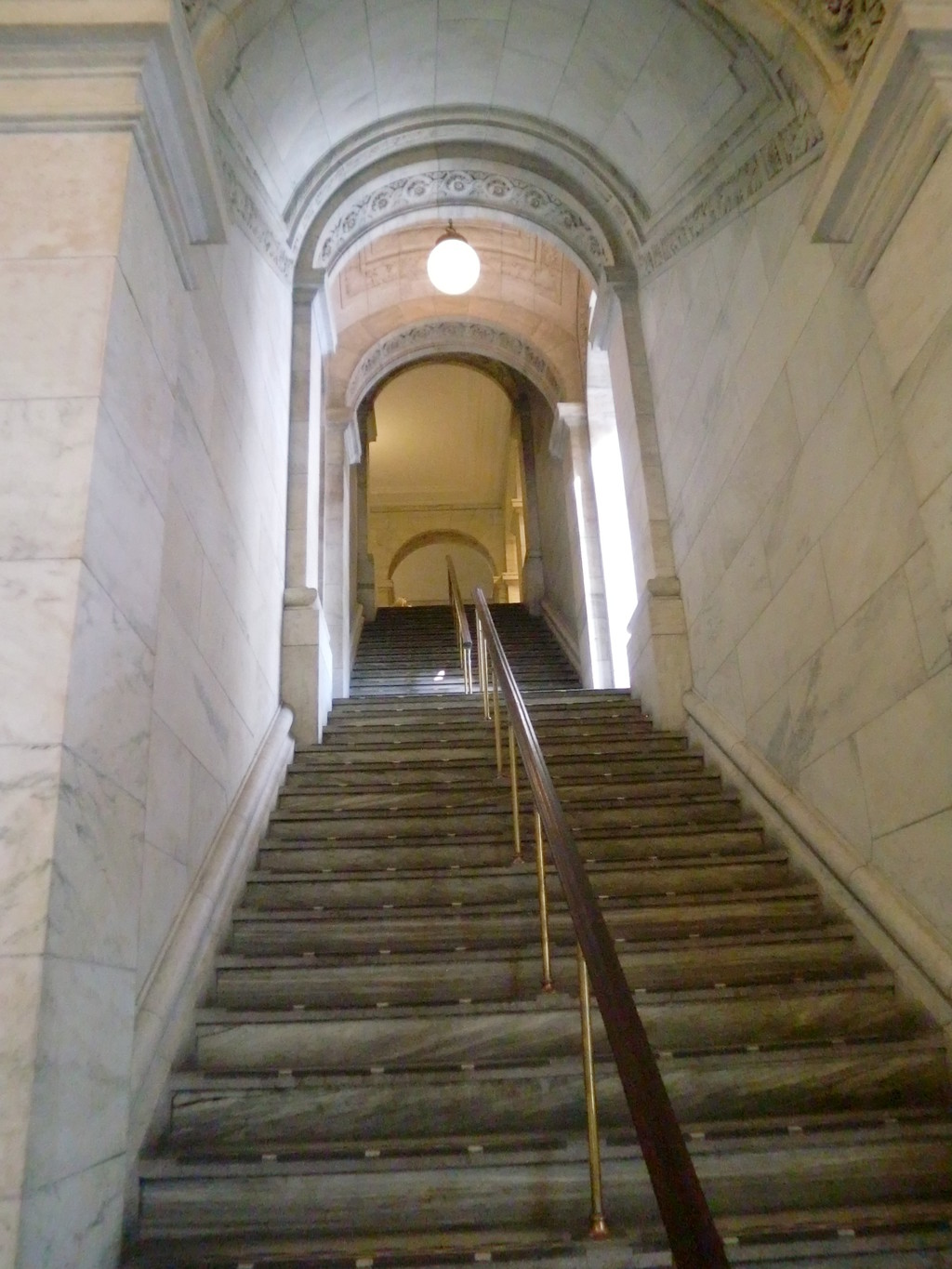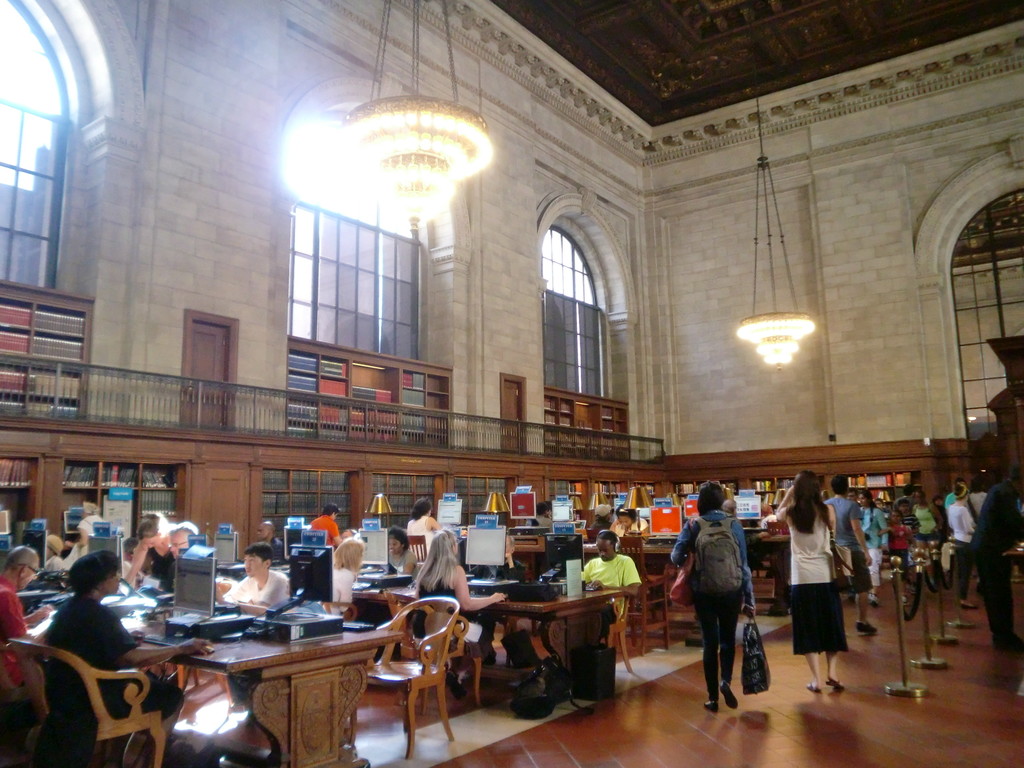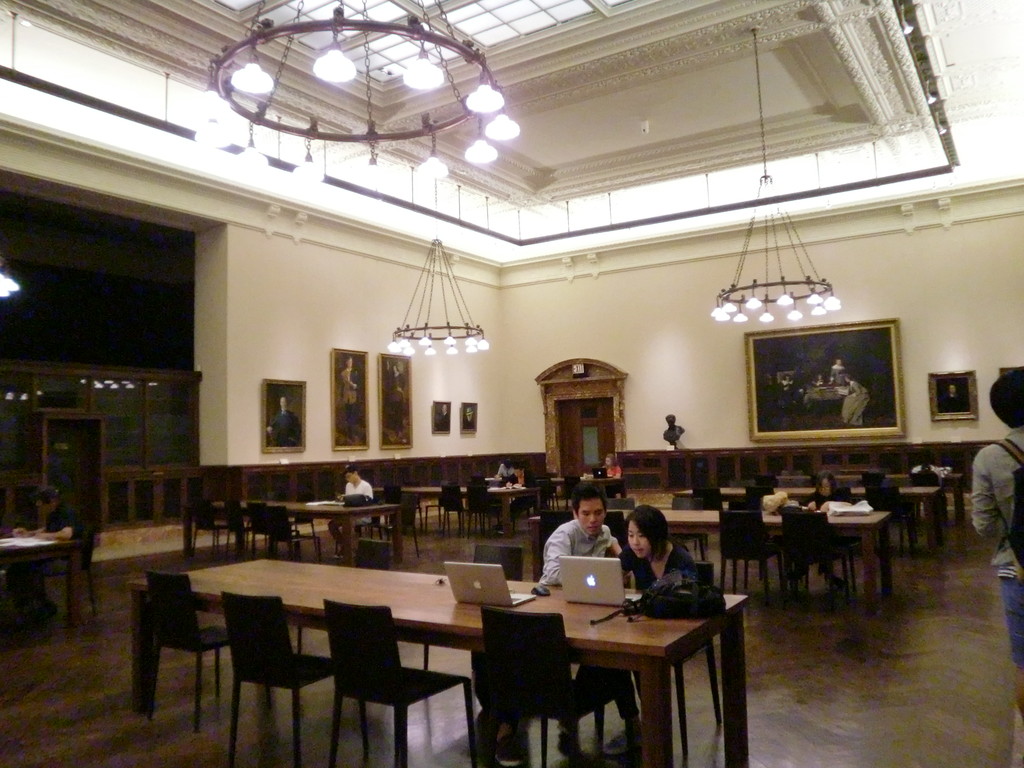New York Public Library
- Address: 5th Ave at 42nd St, New York, NY 10018, Estados Unidos
- Tags:
 What to see New York,
New York,
United States
What to see New York,
New York,
United States
- Telephone: +1 917-275-69
- Website: www.nypl.org
New York Public Library

The origins of this noble institution lie in the era in which New York was emerging as one of the world's most important cities. In the second half of the 19th century, New York had overtaken Paris in terms of population and was steadily approaching London, then the city with the highest population in the world. Fortunately, this flourishing and somewhat hasty metropolis included amongst its citizens people who foresaw the conversion of New York into one of the biggest centres of urban culture on the planet, and ensured that it would have an amazing library to suit this status.
Among these men was governor Samuel J. Tilden (1814-1886), who donated the majority of his fortune - some $2. 4 million - to 'the establishment and maintenance of a free library and reading room in the city of New York'.

Upon Tilden's death, New York already had two considerably important libraries - the Astor and Lenox libraries - but these could not be considered as truly public institutions as Tilden had envisaged. The Astor Library had been built with thanks to the generosity of John Jacob Astor (1763-1848), a German immigrant who was the richest man in America at the time of his death. In his will, he donated 400, 000 dollars to the creation of a reference library in New York. The Astor Library opened its doors for the first time in 1849, in the building which is now the home of Joseph Papp Public Theater, New York's Shakespeare Festival. Though its books were not for loan and its opening hours were restricted, it was nevertheless an important resource for reference and research.
Another main library in New York at this time had been founded by James Lenox and consisted mainly of his personal collection of rare books (which included the first Gutenberg bible to make it to the New World), manuscripts and Americana. Located where the current Frick Collection is now housed, the Lenox Library was principally intended for bibliophiles and academics. While use of the library was free, entrance tickets were required.

In 1892, both Astor and Lennox libraries were experiencing financial difficulties. The combination of a decline in staff and an expansion of their collections had lead to patrons reconsidering their investments. John Bigelow, a New York lawyer and Tilden's trustee, came up with the perfect plan to combine the Astor and Lenox libraries' resources and form a new institution, which would be known as the New York Public Library, Astor, Lenox and Tilden Foundation. Bigelow's plan, signed and agreed on May 23rd 1895, was praised as a revolutionary example of private philanthropy used for public benefit.
The chosen location for the new Public Library was the Croton Reservoir, a popular area on Fifth Avenue between streets 40a and 42a. Dr. John Shaw Billings, one of the most brilliant librarians of his age, was named as the manager.
Billings knew exactly what he wanted to achieve. His design, sketched briefly on a scrap of paper, was turned into a model which then became an emblematic building, known for its lions and the learning which takes place inside it. Billings' plan included an enormous reading room which spanned seven floors, and the fastest request and return system in the world to ensure that the resources requested by visitors would reach their hands as fast as possible.
After an open design competition which invited all the most important architects in the city to participate, the relatively unknown company Carrère and Hastings were chosen to design and build the new library. The result, considered the peak of Beaux-Arts design, was the largest marble structure ever to have been built in the United States. Before construction could begin however, some five hundreds workers were required to spend two years dismantling the warehouse and preparing the area. The first stone was finally laid in May 1902.
Work on the monumental library progressed slowly but constantly, and the final cost of construction totalled $9 million. During the summer of 1905, the enormous columns were installed and work was begun on the roof. At the end of 1906, the roof was finished and designers began the five year long job of finishing the interior. In 1910, 75 miles of shelves were installed to store the enormous collections.

Over a million books had been installed in the library by the day of its official opening on May 23rd 1911, sixteen years to the day since the contract to create the Astor, Lenox and Tilden Foundation had been signed. The ceremony was presided over by President William Howard Taft, and governor John Alden Dix and mayor William J. Gaynor also attended.
The following morning, the New York Public Library made a show of opening its doors officially. The response of the public was incredible. Between 30, 000 and 50, 000 visitors flooded through the doors on this first day. One of the first objects requested was Nravstvennye by NI Grot idealy nashego vremeni (Ethical Idea of Our Time), a study by Friedrich Nietzsche and Leon Tolstoy. The reader made their request at 9. 08am and received the book six minutes later!
Meanwhile, the Library had established its lending department after its consolidation with the New York's Lending Library in February 1901. A month later, Andrew Carnegie offered $5, 200, 000 towards the construction of system of library branches throughout the city of New York on the condition that the city would assume the locations and finance the maintenance and operation of the libraries.
Later on in the same year, the New York Public Library contracted the city of New York to open 39 branches of Carnegie's public libraries in the Bronx, Manhattan and Staten Island (Brooklyn and Queens Libraries being separate entities). From the New York Public Library's first days then, a tradition of collaboration with the city and community was established, which continues today.
Almost overnight, the New York Public Library became a vital part of the intellectual structure of American life. Among its recent beneficiaries are immigrants, who the library puts in contact with the literature and history of their new country, as well as with the patrimony which these people bring with them.
Today, the 92 sections of the library include four research centres - concentrated on the humanities and the social sciences, the scenic arts, black history and culture, business and industrial studies - and a network of neighbourhood libraries throughout the Bronx, Manhattan and Staten Island. The system offers free access to its physical and electronic collections and information, as well as to its services for people of all ages, from small children to adolescents and adults. Its research and lending resources combined total more than 52 million, among them materials for people with sight impairment. Every year, the library also hosts thousands of expositions and public programmes, including technology, literary and research classes plus English classes for speaking of other languages. The library serves 18 million customers every year and the library's website receives 32 million visits each year from over 200 countries.
And if you're interested in going to New York, have a look at this complete guide to New York at Christmas: the most wonderful time of the year!
Photo gallery
Content available in other languages
- Español: Biblioteca Pública de Nueva York
- Italiano: New York Public Library
- Français: La bibliothèque publique de New York
- Polski: Nowojorska Biblioteka Publiczna
Rate and comment about this place!
Do you know New York Public Library? Share your opinion about this place.


















